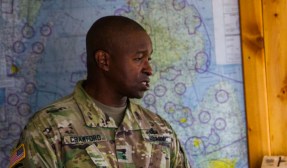IT and cyber collaboration was key in Ohio U.’s pandemic response

A comfortable working relationship between mainline IT staff and cybersecurity professionals has been crucial to keeping Ohio University running through the COVID-19 pandemic, speakers said Friday.
Speaking during a virtual event held by the cloud services vendor VMware, Stephen Hoffer, an information security engineer at the the 33,000-student school, said university systems were able to survive the shift to mostly remote operations over the past 13 months because his team works closely and cooperatively with Ohio University’s information technology office.
“It’s not an antagonistic relationship. It’s a collaborative relationship,” he said.
Pandemic measures at the Athens, Ohio, campus ramped up so quickly last year that one day, staff who were capable of working from home were ordered to do so immediately, Hoffer recalled. But Levi Cunningham, a server administrator, said the shift also necessitated a drastic scaling-up of the school’s virtual desktop infrastructure.
Using VMware’s platform, Cunningham said Ohio University is now running about 1,400 virtual machines, about twice what it was running before the pandemic.
Still, the usual perils of widespread remote work have dogged the institution, Hoffer added, especially as the pandemic arrived just as it was trying to mature its overall cybersecurity.
“COVID onset happened around the same time we implemented our first information security policy,” he said. “We went from this layer 3 protected bubble to a massively distributed workforce where everyone was trying to find the best way to connect with their department or business unit. It has been a challenge.”
Hoffer said his team has provided guidance on best practices for remote work to the university network’s users. But Hoffer and Cunningham said they are taking additional steps on the back end, including implementing a suite of tools from Carbon Black, VMware’s cybersecurity subsidiary, with endpoint detection and threat hunting and response. That’s helped university officials stay ahead of major cyber incidents, Cunningham said.
“As we get these news reports like the Exchange Server zero-day, we can easily run a report and address it,” he said.
Hoffer said that when the Carbon Black tools are fully installed, they’ll allow his team to mitigate issues and manage networkwide patching more efficiently.
“It will be nice to have that control on the system itself,” he said.
Cunningham said it’s important “being comfortable working with your security team” and close collaboration between network engineers like himself and security pros like Hoffer as institutions continue to navigate the challenges of remote life.
“We’re all in this together, especially with public entities being targeted all the time with ransomware attacks,” he said, citing recent incidents in Buffalo Public Schools and cities and states around the country. “In my time with the systems team, we’ve been working hand-in-hand with the security team.”




